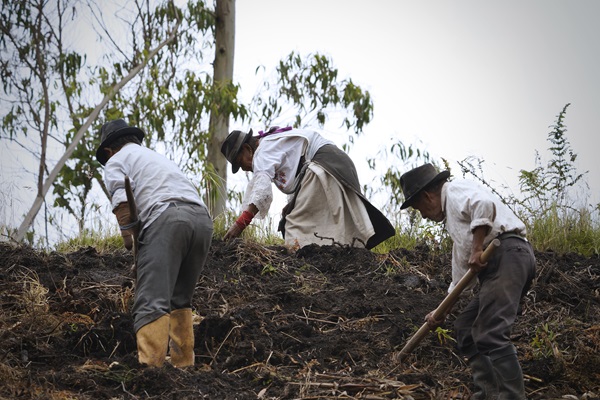
Rome - Two biodiverse agricultural and agroforestry systems, or chakras, in Ecuador - one in the Andes mountains and one in the country’s Amazon region - have won recognition as Globally Important Agricultural Heritage Systems (GIAHS) by the Food and Agriculture Organization of the United Nations (FAO).
The sites were designated during a virtual meeting of the GIAHS Scientific Advisory Group this week (13-16 February). The selection criteria stipulate that sites must have global importance, supporting food and livelihood security and native agro-biodiversity, ancestral knowledge systems, social values and culture as well as outstanding landscapes.
The chakra sites in Ecuador have thrived thanks to collective action by Indigenous Peoples, ensuring sustainable management of natural resources and food sovereignty over the centuries. “Designation of these sites also boosts women’s empowerment, as 80 percent of chakras are managed by Indigenous women, locally known as Chakramamas, who use valuable traditional knowledge in the dynamic conservation, sustainable use and daily functioning of these sites,” said Maria Helena Semedo, FAO Deputy Director-General.
With the latest additions to the global agricultural heritage systems list, FAO's worldwide agricultural heritage network now consists of 74 systems in 24 countries around the globe.
Ancestral agricultural system
The Andean Chakra of the Kichwa Indigenous Peoples is characterized by the integration and interconnection of climates, ecosystems, agricultural practices and biodiversity at an altitude ranging from 2 500 to 3 400 meters in the Cotacachi Mountains of the Andean range.
The chakras are at the centre of the development of material and symbolic life for Kichwa families and communities, supported by a rich ancestral knowledge encompassing gastronomy, medicine and rituals. They are key to the conservation of a great diversity of unique crop landraces, with the territory considered one of the largest and best preserved agrobiodiversity zones in Ecuador and the Andean region.
The different plateaus of the mountain at different altitudes are used to cultivate species with different needs, contributing to food security and sovereignty, nutrition, medicine, ornamentation, fuel, and fodder, as well as cultural uses and production of handicrafts and utensils. The system in Cotacachi has enabled the in-situ conservation of species and varieties including maize, beans, quinoa, and potatoes. These are primarily intended for communities’ own consumption. But the small surpluses are marketed to generate income for families, becoming an important means of livelihood for the communities and of economic empowerment and autonomy for women.
The Andean Kichwas’ Indigenous communities have generated cognitive systems from their relationship with the environment: Pachamama, in the Kichwa language. This holistic knowledge, transferred from one generation to the next, is a unique and living repertoire. It encompasses signs, symbols, concepts and perceptions about the use and sustainable management of local ecosystems for family, community, and cultural life.
Sustainable agroforestry land-use model
The Amazonian Chakra is a sustainable agroforestry land-use model in which productive spaces located within the farm are managed by families under an organic and biodiverse approach, offering multiple services to the populations.
Here, the Kichwa and Kijus communities have developed a polyculture cropping system in which cocoa is cultivated together with timber, fruit, medicinal, handicraft, edible and ornamental species and other activities including hunting and timber and non-timber forest products. The Amazon Chakra maintains patterns in its spatial design and well-defined phases in its temporal management cycle, which mimics the natural processes of succession or restoration of forests within the Amazon biome.
Aimed at efficient management of the low fertility of Amazonian soils, the system is unique in its integration of forest and watershed management, with communities implementing a series of agroforestry arrangements and practices to ensure shade and soil care. Over the last two decades, interest in this concept has grown, as a production option that can help smallholders potentially become more resilient to climate change, as well as economic and market changes.
This builds on the fact that while the Amazon has long been defined as an unexplored and underutilized region, in reality agriculture there has been developed for thousands of years, with the domestication and use of innumerable rainforest species. These include, chili (Capsicum spp.), beans (Fabaceae family), cassava (Manihot esculenta), sweet potato (Ipomea spp.), corn (Zea spp.) and cacao (Theobroma spp.) or bush cocoa (Herrania spp.).
This makes the Kichwa communities truly guardians of the rainforest through their sustainable practices and their way of life in harmony with the ecosystems. It is widely recognized that Indigenous Peoples have a considerable role to play in safeguarding biodiversity, forests, languages, traditional knowledge and in mitigation, adaptation and resilience efforts to face global climate change.